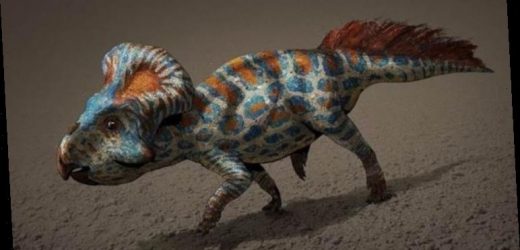Dinosaurs: Fossil shows ‘different appearance’ says expert
New research has found the neck frill of ceratopsians, a colourful bulge on top of their head and neck, likely came about to attract mates. Experts have long sought to determine why dinosaurs had decorative skull shapes. It had been unclear whether the frills, like the ones found on the triceratops, were for battle, intimidation or to attract mates.
New research from the Natural History Museum has, however, found it was likely for the latter.
The Natural History Museum described the evolution of the thrills as “sexual selection” – the idea certain traits in animals are favoured by members of the opposite sex, and so in time can become more elaborate.
Examples of these traits today can be found in, for one example, male peacocks.
Researchers from the Natural History Museum chose to focus their research on the ceratopsians, which includes the triceratops and the protoceratops.
We will use your email address only for sending you newsletters. Please see our Privacy Notice for details of your data protection rights.
The protoceratops was an interesting dinosaur, which was around the size of a sheep and lived 83 to 70 million years ago, has the neck thrill but no horns.
Dr Andrew Knapp, a postdoctoral researcher at the Natural History Museum, said: “In many fossil animals we have unusual structures and traits which aren’t really seen in living animals today.
“Protoceratops didn’t have any horns but they still had a huge frill.
“Several theories have previously been suggested for the emergence of these neck frills. Some have suggested that they were used for protection, others that they played a role in cooling the large herbivores down, or that they allowed individuals to recognise different members of their own species.”
Dr Knapp and his colleagues 3D scanned 30 complete skulls of protoceratops, raging in size from newly born to fully grown adults.
This allowed the team to compare the development of the skulls, according to the research published in Proceedings B.
In creatures today which display sexual selection, certain features show a distinct pattern of growth, known as allometry.
When allometry is disproportionately bigger than the growth of other traits, it is “almost always a sexually selected feature, such as the antlers of a deer”, the Natural History Museum said.
The frills of protoceratops displayed growth patterns consistent with allometry, indicating that the frills were very possibly sexually selected.
Dr Knapp continued: “While there are quite a few examples in living animals where usually females select males based on the size of their tail feathers or calls, it is quite often overlooked that males do the same thing with females as well.
“In a species of bird known as the crested auklet, both males and females have an impressive plume of feathers curling from the tops of their heads used by each sex to signal their health.
“So while the plume of feathers is a sexually selected trait, it has not lead to sexual dimorphism.
“Sexual selection is a bit more complex than the bigger the male trait the more successful it is.
“There almost certainly were differences between males and females but quite often differences are in body size, so males will be bigger than females or vice versa. It could also have been through something else like colouration, which doesn’t preserve in fossils.”
Source: Read Full Article






